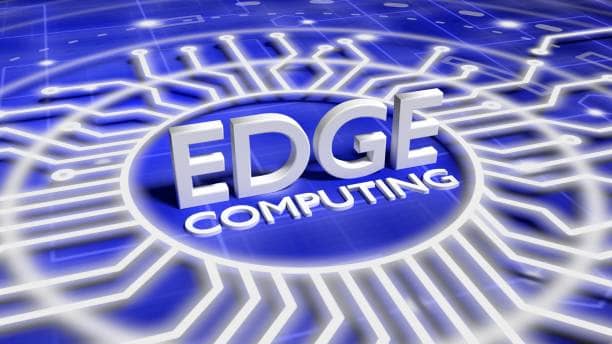One of the biggest questions asked these days: Why do companies need Edge computing?
The trend of edge computing might be relatively slow, but it is surely making its way into the lives of everyday people.

To simply grease the wheels, edge computing is the practice of processing data and tasks away from central servers.
This can be done in several ways, but the most common implementation is to use small, portable devices to handle data processing at the edge of the network.
The implementation of this technology for organizations and corporations do have some benefits, and chief among them is improved performance and decreased latency.
By moving data processing away from central servers, companies can improve response times and keep operations running smoothly even in times of peak traffic.
Additionally, edge computing can help companies reduce their bandwidth and storage needs.
By using small, localized devices to handle data processing, companies can avoid storing and transmitting large files across their networks.
Are you looking for a way to improve your company’s performance and efficiency? edge computing might be the answer you’re looking for!
In-Depth Analysis Of Edge Computing
To simplify things, it is the practice of processing data and tasks as close to the source of collection as possible.
This can be done in many ways, including but not limited to distributing data processing loads between central data centers and local devices.
It is also the moving of processed tasks closer to the user or the data’s origin and then implementing smart algorithms and caching techniques.
In a world where we are increasingly generating and collecting data at an unprecedented rate, edge computing has become a more necessary solution to help manage all that information.
By bringing processing tasks closer to the user or the data’s origin, this process of saving data rather than cloud can help reduce latency times and improve overall system performance.
The Rewards Of Edge Computing
Well, let’s start with the basics. There are a few key benefits of edge computing that make it so attractive to companies.
First, this process of saving data allows for faster decision-making, as data can be processed and acted on closer to where it is generated.
This also minimizes the risk of lost data due to network congestion or outages.
furthermore, edge computing helps reduce the amount of data that needs to be transmitted, which saves on bandwidth costs and helps speed up system response times.
Another way Edge computing is beneficial to users is such that it can help improve security and privacy, as sensitive data does not need to be transmitted over the network.
Edge computing is a major contributor for faster response time and increased efficiency.
By placing computing resources closer to the user, the response time is drastically reduced. This is because the data doesn’t have to travel as far, and there is less latency.
Overall, this leads to increase in efficiency and production.

Edge computing can help reduce costs by eliminating the need to build and maintain expensive data centers.
By helping to keep data secure and close to the source, Edge computing is now one of the best technological backups for security measures as it eliminates the risk of data being compromised since it doesn’t need to pass through a public network.
HIRE US FOR YOUR PRODUCT TESTING AND REVIEWS!
Flaws In The Use Of Edge Computing
Implementing edge computing comes with its own set of challenges that must be addressed before deployment.
For starters, you need to consider the type and amount of data your systems will process.
Edge computing is not well suited for large volumes of data, then comes the need to think through what data needs to be processed at the edge.
Additionally, you must also ensure sufficient and reliable connectivity so that your edge-based applications are fed with data in a timely fashion.
However, being mindful of the kind of hardware required for edge computing is very important.
You’ll need devices that are energy-efficient yet powerful enough for the local processing demands, as well as appropriate high-speed communication infrastructure that can handle the data flow.
Security must also be taken into account, as any breach at an individual device level would impact the entire system.
Last but not the least, the costs associated with setting up and maintaining an edge computing system should factor into your decision-making process.
Implementing Fog Computing in Businesses

If you’re a business looking for the next technology to drive growth and customer engagement, edge computing presents a great opportunity.
Edge computing is distinguished from traditional cloud computing models in that it enables computation, analytics, and storage to be done at the edge of the network. In other words, services are distributed closer to where they are needed – whether that be an IoT device or an end user’s device such as a laptop or mobile phone.
This means faster response times and less latency, leading to better performance and user experience.
Implementing edge computing for businesses can also help businesses save on costs.
For example, by pushing more of the workload to end-users devices, businesses can reduce bandwidth and backend computation costs while improving user experience.
Additionally, edge computing offers increased security as data is not transferred over networks that are vulnerable to intrusion attempts. All of these factors make edge computing an attractive option for businesses looking to reduce costs while also providing their customers with a superior product or service.
Who Can Use Edge Computing?
What type of companies can benefit from edge computing? Well, the list is much longer than you might think.
Companies in a wide range of industries are taking advantage of the speed and power of edge computing, and so could you.
From healthcare to retail, edge computing helps organizations quickly process data right at the source.
For example, medical equipment can be connected to the cloud using edge systems to review patient information in real-time.
Similarly, sensors located at retail stores can help detect potential shoplifters before they walk out with stolen goods.
Saving data at the Edge also allows for more rapid response times when it comes to customer inquiries or feedback.
By utilizing edge computing networks, organizations can provide faster and more efficient customer service that’s tailored to their customers’ needs.
Conclusion
Edge computing is an incredibly important computing technology that companies need to take advantage of.
It’s perfect for dealing with the large amounts of data that are being generated by devices like Google Home and Amazon Echo, as well as other big tech devices.
Also, it is essential tool for handling the increasing amounts of data that are being generated by AI, especially in the case of AI talking to AI enabled devices.
Start looking into edge computing for your company today! It may come in handy….



One Comment